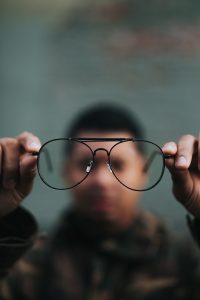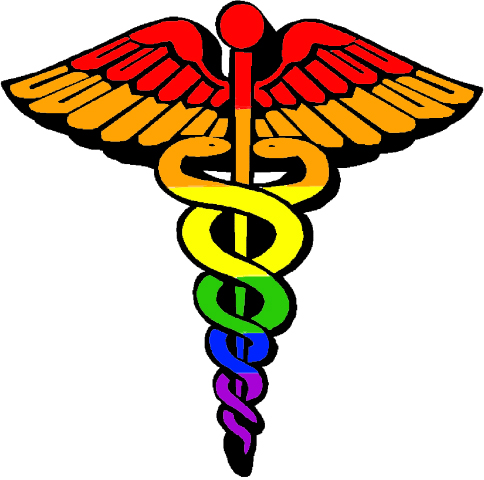Last Updated on January 30, 2020
The Facts

More than 3.4 million (3%) Americans aged 40 years and older are either legally blind (having visual acuity [VA] of 20/200 or worse or a visual field of less than 20 degrees) or are visually impaired (having VA of 20/40 or less). The Federal Interagency Forum on Aging Related Statistics estimates that 17% of the age 65 and older population report “vision trouble.” Twenty-one million Americans report functional vision problems or eye conditions that may compromise vision. Older people are more likely to experience vision loss because of age-related eye diseases.
Prevalence of Visual Disability
The following estimates (for adult’s age 16 and older reporting significant vision loss, who were in the non-institutionalized, civilian population) are derived from the American Community Survey results for 2016, as interpreted by Cornell University’s Employment and Disability Institute (EDI), unless otherwise credited.
The number of non-institutionalized, male or female, ages 16 through 75 +, all races, regardless of ethnicity, with all education levels in the United States reported to have a visual disability in 2016:
- Total (all ages): 7,675,600 (2.4%)
- Total (16 to 75+): 7,208,700 (2.83%)
- Women: 3,946,300 (3.01%)
- Men: 3,262,300 (2.65%)
- Age 16 to 64: 4,037,600 (2.0%)
- Age 65 and older: 3,171,100 (6.6%)
- Total (16 to 75+): 7,208,700 (2.83%)
According to the American Foundation for the Blind (AFB), a rapidly increasing proportion of the aging adult population experiences eye problems that make simple daily tasks difficult or impossible, even when wearing glasses or contact lenses. The risk of severe eye problems has been found to increase significantly with age, particularly in those over age 65. More alarmingly, the trend is expected to continue to grow significantly as the baby boom generation continues to age. Experts predict that by 2030, rates of vision loss will double along with the country’s aging population.
The leading cause of vision impairment and blindness among older adults in the U.S. is age-related eye disease, including macular degeneration, cataracts, diabetic retinopathy, and glaucoma. Physiologic changes in vision that occur with age, such as loss of near focus, reduced contrast sensitivity, decreased color vision and some loss of peripheral (side) vision compound a reduction in visual acuity.
There are many medication safety issues associated with vision loss. Low vision and blindness affect a person’s ability to read prescription labels and information sheets about medications, determine the color and markings distinguishing a medication, and see gauges on testing devices. People who cannot read prescription labels or distinguish among different medications must rely on memory or depend on someone else for help, and may not take their medications correctly or at all. Not all vision loss is the same and the issues differ depending on the nature of the visual impairment. For example, the needs of people with glaucoma who have tunnel vision are different from those with macular degeneration who have central vision loss. Also, individuals who are blind have different issues from individuals with low vision. Individuals who are blind may need audible devices, tactile devices, or Braille.
Addressing a Growing Problem
In response to a federally-mandated effort to increase access to medications for all populations, in 2013, the U.S. Access Board created a series of recommendations focusing on adults who are blind or visually impaired – and especially older adults – many of whom are older than 60 years and may be more likely to take multiple medications and have caregivers or family members helping administer their prescriptions. The recommendations are contained in a report, “Best Practices for Making Prescription Drug Container Label Information Accessible to Persons Who are Blind or Visually-Impaired or Who are Elderly.” This guidance is advisory only and not mandatory. Pharmacies are not obligated to follow the best practice recommendations.
- Here are a few other tips to share:
-
- Safely dispose of medication once it is expired. This will help reduce the number of bottles sitting around unnecessarily and can help cut down on drug diversion.
- Use dark trays, as they provide the best contrast against most medications.
- Keep a light or magnifying glass near where you take your medicines each day.
(With permission from the American Pharmacists Association, this blog was adapted from “Counseling patients who are blind or visually impaired,” Pharmacy Today, Page 26, March 1, 2014)
 BeMedWise was launched in 2017 by the National Council on Patient Information and Education (NCPIE). NCPIE was established in 1982 in Washington, D.C. as one of the original patient safety coalitions. It became recognized as a trusted source of educational resources for patients, caregivers, healthcare professionals and the general public.
BeMedWise was launched in 2017 by the National Council on Patient Information and Education (NCPIE). NCPIE was established in 1982 in Washington, D.C. as one of the original patient safety coalitions. It became recognized as a trusted source of educational resources for patients, caregivers, healthcare professionals and the general public.
In July 2018, the operation of NCPIE and its programs, including ground-breaking research on patient-healthcare provider engagement and medicine communication, were assumed by NeedyMeds. Harnessing the expertise and reach of the BeMedWise partners, committed stakeholder groups and program sponsors, BeMedWise will sustain the NCPIE mission to improve health and stimulate high-quality medicine safe use conversations between healthcare professionals, patients, and caregivers.





